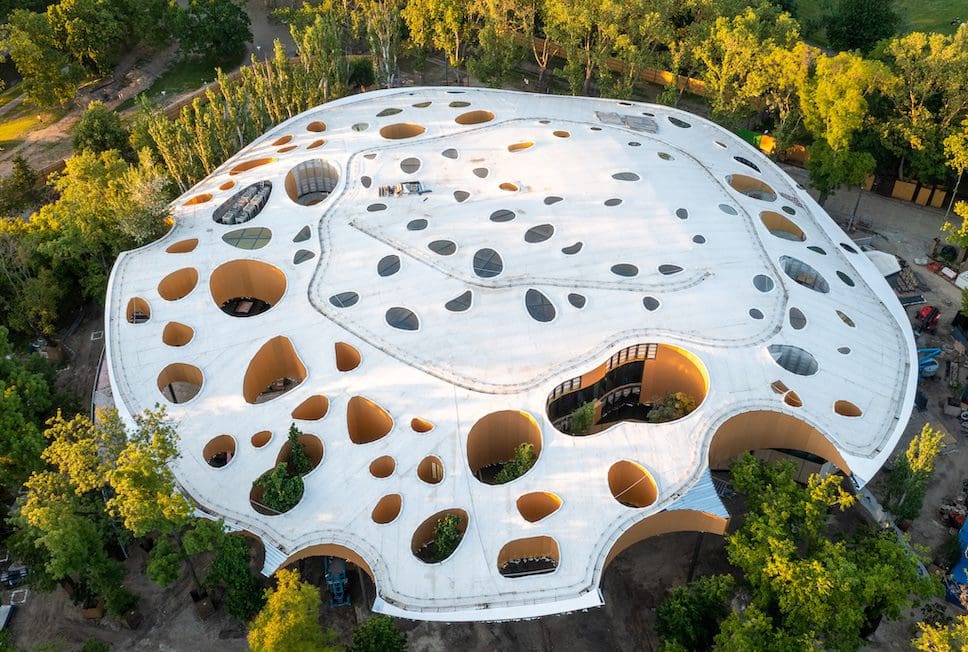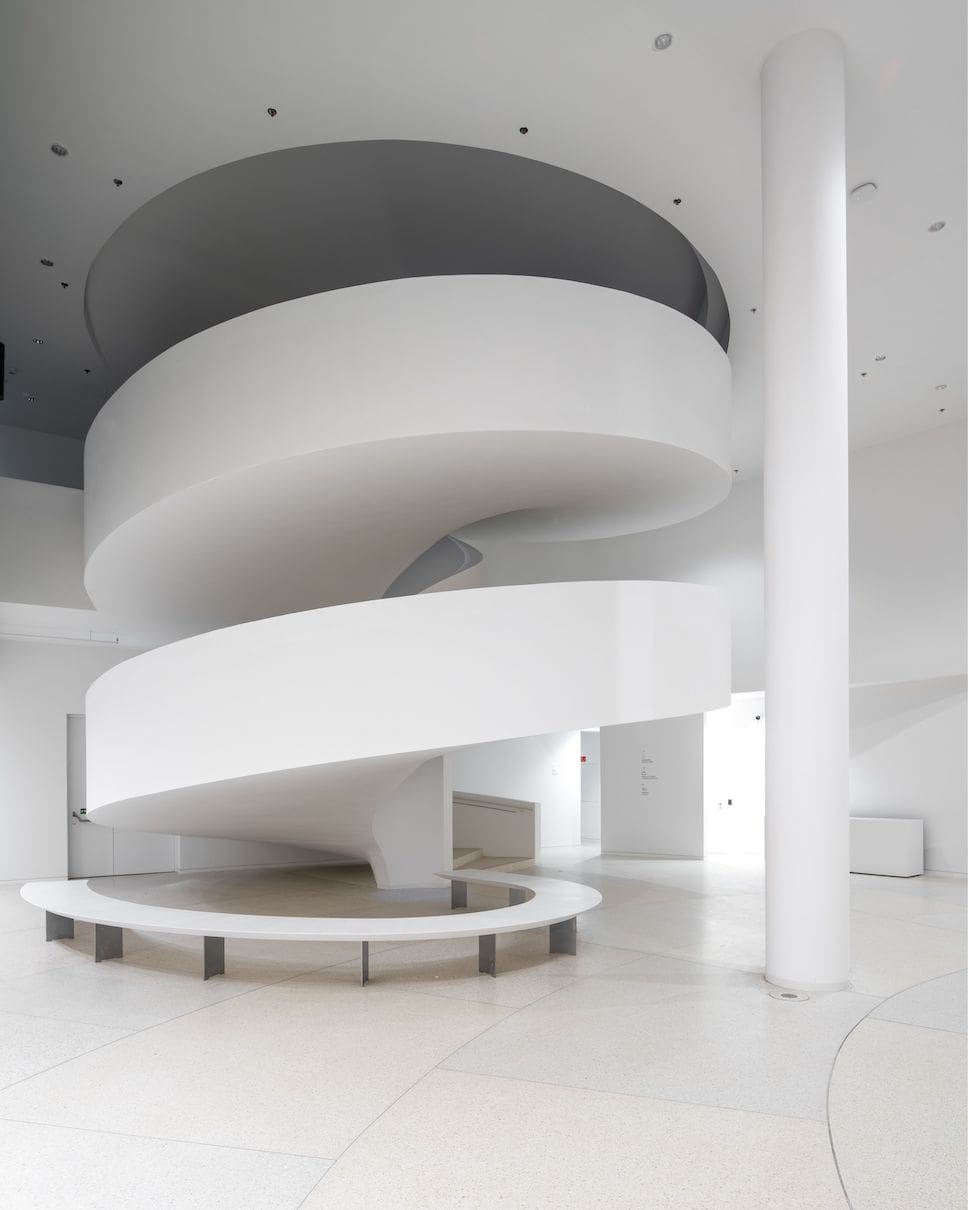
Japanese architect Sou Fujimoto has completed the mesmerising House of Music museum in Budapest, topping it with an undulating canopy roof punctuated by trees.
Built as part of the Liget Budapest Project, the largest and most ambitious urban cultural development in Europe to date, the House of Hungarian Music is a city landmark and an experience that combines landscape, architecture, and exhibition design all in one. The unique structure pushes the boundaries of 21st century museum design, whilst being inspired by the aims of the Liget project to turn Budapest’s central City Park into a green oasis.

Spanning an impressive 9,000 square metres, the contemporary building is not only nestled amongst the trees but also presented as a continuation of its natural context. The canopy is created from “over 30,000 decorative tree leaves set in the suspended ceiling and secured in place by a steel structure made out of 1,000 honeycomb-shaped elements,” according to the architects.
“We were enchanted by the multitude of trees in the City Park and inspired by the space created by them,” says lead architect Sou Fujimoto. “Whilst the thick and rich canopy covers and protects its surroundings, it also allows the sun’s rays to reach the ground. I envisaged the open floor plan, where boundaries between inside and outside blur, as a continuation of the natural environment.”

Both the construction work and the building site have scored an “exemplary” rating in terms of the BREEAM environmental awareness assessment. Putting sustainability at the forefront, the building is equipped with an innovative heating and cooling system, using mainly geothermal energy and other renewable sources.
With its purpose to bring the experience of music to life through the interaction of nature, sound and light, the House gives its visitors an opportunity to participate and interact. András Batta, Managing Director of the House of Music, Hungary and former President of Liszt Academy, says: “Music making is at the heart of human experience. The House is a one-of-a-kind institution created to introduce the beauty of sound and music, alongside the important role it plays in every aspect of our life.”

Dedicated to telling the history of music in Hungary, the House of Music is set across three distinctive storeys created “to reflect the three movements of a musical score.” On the subterranean level there is space for permanent and temporary exhibitions – and an impressive hemispherical sound dome.
“The concept was inspired by the 20th century composer, Karlheinz Stockhausen, who created the first 3D aural experience in the form of a spherical concert hall, which debuted at the 1970 World Exposition in Osaka, Japan,” state the architects. The result is a fully immersive experience, allowing up to 60 visitors to enjoy the 360-degree surround sound.


The institution’s first temporary exhibition will focus on key moments in Hungarian pop music from the 1950s to the 1990s, and the permanent exhibition titled ‘Sound Dimensions – Musical Journeys in Space and Time’ will offer an immersive journey through 2,000 years of music making in Europe.
Visitors will also be impressed by the height and feeling of openness throughout the museum. For example, with the ground floor enwrapped by 94 custom-manufactured, heat-insulated glass panels, some areas of the House reach as high as 12 metres. It’s certainly a space that has the wow-factor, with different experiences whether you’re visiting during the day or in the evening.

Photography by Palkó György.
Discover more about Liget Budapest Project.
For more cultural architecture, read about the coral stone amphitheatre at the Aranya Theatre and the impressive Bao’An Performing Arts Centre in Shenzhen.
